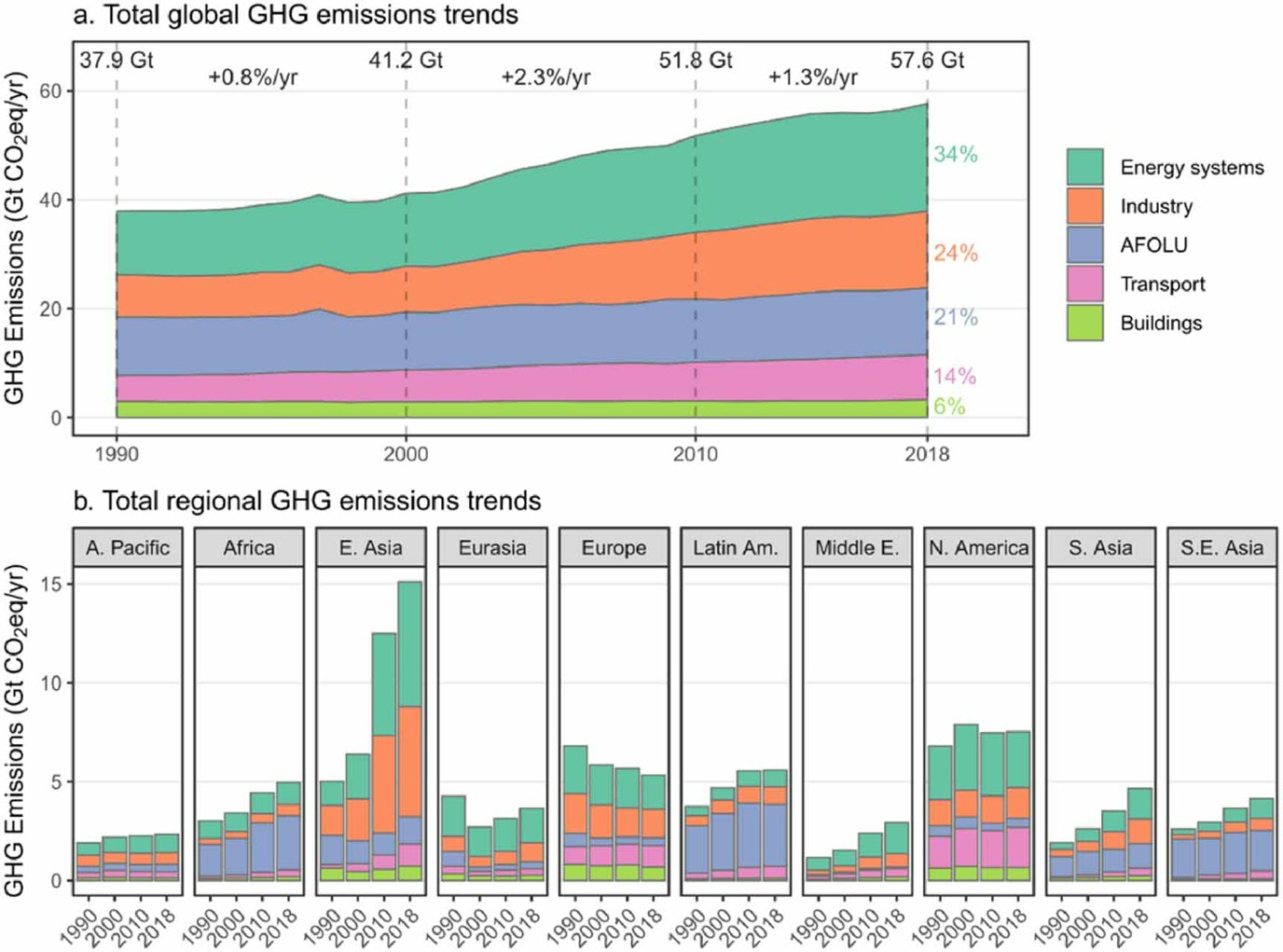Klaus Hubacek was part of a team of 29 researchers from six continents that examined the latest, globally available emissions data for the decade leading up to 2018
Title: A review of trends and drivers of greenhouse gas emissions by sector from 1990 to 2018.
Authors: William F Lamb, Thomas Wiedmann, Julia Pongratz, Robbie Andrew, Monica Crippa, Jos G J Olivier, Dominik Wiedenhofer, Giulio Mattioli, Alaa Al Khourdajie, Jo House, Shonali Pachauri, Maria Figueroa, Yamina Saheb, Raphael Slade, Klaus Hubacek, Laixiang Sun, Suzana Kahn Ribeiro, Smail Khennas, Stephane de la Rue du Can, Lazarus Chapungu, Steven J Davis, Igor Bashmakov, Hancheng Dai, Shobhakar Dhakal, Xianchun Tan, Yong Geng, Baihe Gu and Jan Minx.
Journal: Environ. Res. Lett. 16 073005.
Abstract
Global greenhouse gas (GHG) emissions can be traced to five economic sectors: energy, industry, buildings, transport and AFOLU (agriculture, forestry and other land uses). In this topical review, we synthesise the literature to explain recent trends in global and regional emissions in each of these sectors. To contextualise our review, we present estimates of GHG emissions trends by sector from 1990 to 2018, describing the major sources of emissions growth, stability and decline across ten global regions. Overall, the literature and data emphasise that progress towards reducing GHG emissions has been limited. The prominent global pattern is a continuation of underlying drivers with few signs of emerging limits to demand, nor of a deep shift towards the delivery of low and zero carbon services across sectors. We observe a moderate decarbonisation of energy systems in Europe and North America, driven by fuel switching and the increasing penetration of renewables. By contrast, in rapidly industrialising regions, fossil-based energy systems have continuously expanded, only very recently slowing down in their growth. Strong demand for materials, floor area, energy services and travel have driven emissions growth in the industry, buildings and transport sectors, particularly in Eastern Asia, Southern Asia and South-East Asia. An expansion of agriculture into carbon-dense tropical forest areas has driven recent increases in AFOLU emissions in Latin America, South-East Asia and Africa. Identifying, understanding, and tackling the most persistent and climate-damaging trends across sectors is a fundamental concern for research and policy as humanity treads deeper into the Anthropocene.

| Last modified: | 05 July 2021 12.05 p.m. |
More news
-
24 March 2025
UG 28th in World's Most International Universities 2025 rankings
The University of Groningen has been ranked 28th in the World's Most International Universities 2025 by Times Higher Education. With this, the UG leaves behind institutions such as MIT and Harvard. The 28th place marks an increase of five places: in...
-
05 March 2025
Women in Science
The UG celebrates International Women’s Day with a special photo series: Women in Science.
-
16 December 2024
Jouke de Vries: ‘The University will have to be flexible’
2024 was a festive year for the University of Groningen. In this podcast, Jouke de Vries, the chair of the Executive Board, looks back.
